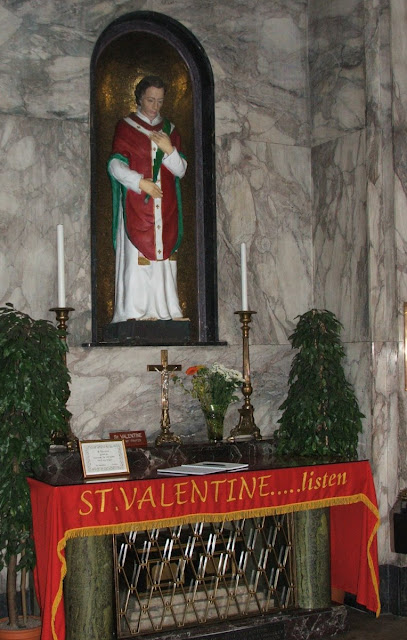 |
What is V Day and history behind Valentines Day and what day is valentine day?
Valentine's Day, additionally called Saint Valentine's Day or the Feast of Saint Valentine, is a yearly occasion celebrated on February 14. In the year 2017 it is on Tuesday, February 14. It began as a Western Christian formal devour day regarding at least one early holy people named Valentinus, and is perceived as a noteworthy social and business festivity in numerous locales around the globe, in spite of the fact that it is not a public holiday in any nation.Valentines Day History: Why Valentine's day is celebrated? Whens valentines day
Valentine history has a few affliction stories connected with the different Valentines that were associated with February 14 were added to later martyrologies, including a prevalent hagiographical record of Saint Valentine of Rome which showed he was detained for performing weddings for troopers who were illegal to wed and for tending to Christians, who were abused under the Roman Empire. As indicated by legend, amid his detainment, Saint Valentine recuperated the little girl of his corrections officer, Asterius, and before his execution, he composed her a letter marked "Your Valentine" as a goodbye.
The day first got to be connected with sentimental love inside the hover of Geoffrey Chaucer in the fourteenth century, when the custom of cultured love thrived. In eighteenth-century England, it advanced into an event in which sweethearts communicated their adoration for each other by introducing blooms, offering ice cream parlor, and sending welcoming cards (known as "valentines"). In Europe, Saint Valentine's Keys are given to partners "as a sentimental image and a welcome to open the supplier's heart", and in addition to kids, so as to avoid epilepsy (called Saint Valentine's Malady). Valentine's Day images that are utilized today incorporate the heart-molded layout, birds, and the figure of the winged Cupid. Since the nineteenth century, manually written valentines have offered an approach to mass-delivered welcoming cards.
History of Saint Valentines
Various early Christian saints were named Valentine. The Valentines regarded on February 14 are Valentine of Rome (Valentinus presb. m. Romae) and Valentine of Terni (Valentinus ep. Interamnensis m. Romae). Valentine of Rome was a minister in Rome who was martyred in 269 and was added to the timetable of holy people by Pope Galesius in 496 and was covered on the Via Flaminia. The relics of Saint Valentine were kept in the Church and Catacombs of San Valentino in Rome, which "remained a critical explorer site all through the Middle Ages until the relics of St. Valentine were exchanged to the congregation of Santa Prassede amid the pontificate of Nicholas IV". The blossom delegated skull of Saint Valentine is displayed in the Basilica of Santa Maria in Cosmedin, Rome. Different relics are found at Whitefriar Street Carmelite Church in Dublin, Ireland.
 |
| Shrine of St. Valentine in Whitefriar Street Carmelite Church in Dublin |
Valentine of Terni got to be a priest of Interamna (present day Terni) and is said to have been martyred amid the mistreatment under Emperor Aurelian in 273. He is covered on the Via Flaminia, however in an alternate area from Valentine of Rome. His relics are at the Basilica of Saint Valentine in Terni (Basilica di San Valentino). Jack B. Oruch states that "digests of the demonstrations of the two holy people were in almost every congregation and cloister of Europe." The Catholic Encyclopedia additionally talks about a third holy person named Valentine who was said in early martyrologies under date of February 14. He was martyred in Africa with various buddies, yet nothing more is thought about him. Holy person Valentine's head was safeguarded in the nunnery of New Minster, Winchester, and adored.
Valentines day background and valentines day date
February 14 is praised as St. Valentine's Day in different Christian groups; it has, for instance, the rank of "recognition" in the schedule of holy people in the Anglican Communion. What's more, the devour day of Saint Valentine is likewise given in the schedule of holy people of the Lutheran Church. Nonetheless, in the 1969 modification of the Roman Catholic Calendar of Saints, the devour day of Saint Valentine on February 14 was expelled from the General Roman Calendar and consigned to specific (nearby or even national) date-books for the accompanying reason: "However the remembrance of Saint Valentine is old, it is left to specific logbooks, since, aside from his name, nothing is known about Saint Valentine with the exception of that he was covered on the Via Flaminia on February 14.
Few more facts about valintines day or san valentin day
- Holy person Valentine's Day is an official feast day in the Anglican Communion, and also in the Lutheran Church. Many parts of the Eastern Orthodox Church additionally observe Saint Valentine's Day, yet on July 6 and July 30, the previous date out of appreciation for the Roman presbyter Saint Valentine, and the last date to pay tribute to Hieromartyr Valentine, the Bishop of Interamna (current Terni).
- The devour day is still celebrated in Balzan (Malta) where relics of the holy person are guaranteed to be found, furthermore all through the world by Traditionalist Catholics who take after the more established, pre-Second Vatican Council schedule.


0 comments:
Post a Comment